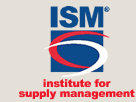Home > Publications > eSide Supply Management

Features
After the Storm
Author(s):
Gary Stading
July/August 2009, eSide Supply Management Vol. 2, No. 4
Key Tenets for Mitigating Disastrous Supply Chain Disruptions
Supply chains play an important role in the role of the world economy. They are also, however, a point of vulnerability.
When a disruption happens without warning — and with devastating results — supply chains have significant impact on the world economy. Recently, increased incidents of hurricanes, earthquakes, various chemical plant explosions and global terrorist attacks have driven his point home.
While some of the devastation in the aftermath can be attributed to the disaster itself, an inordinately large amount of it can be linked back to inefficient supply chain coordination during the relief effort. Hurricane Katrina is a good example: Supply lines of food, clothing and building materials were cut off, and federally funded relief efforts were thwarted.
Solid supply management concepts are crucial to helping provide relief to damaged areas, organizing information coming from those damaged areas and facilitating repair efforts.
Supply chain risk and disruption have been studied and categorized in various ways over the years. Traditionally, the focus has been on operational risks — equipment malfunctions, for example — or on human-centered risks such as strikes or negligence. More recently, however, losses felt after categorical disruptions, such as Hurricane Katrina, are incentives to develop improved reconstruction practices. Mitigating these efforts results not only in time and money saved; it also potentially saves lives.
After a disruption, effective supply management integrates and optimizes three flows: material, information and finance. As most companies already know, information sharing and supply chain coordination is not easy to achieve. Overcoming barriers and attaining alignment requires integration, technological development and continuing research.
How Supply Management Theory Applies
A grounded foundation of communication is crucial when preparing for (and minimizing the magnitude of) supply chain disruptions and increasing the effectiveness of disaster relief efforts. When two or more groups are involved (FEMA and the Red Cross, for example), the degree of effectiveness depends on:
- The degree to which the organizations interact
- The degree of interdependence between the organizations
- The load placed on each organization under the duress of the urgent situation (the percent load and degree of urgency)
- Differences in each organization's skill level.
To improve post-disruption response efforts, a functional framework that specifies how these factors affect logistical efforts is critical. This framework must work to improve interaction between organizations, enhance the degree of interdependence and improve skill levels for facilitating flows of information, funds and materials.
Understanding the organizational dynamics of these types of agencies, when operating under an increased workload in urgent situations, fosters better contingency plans. As a result, the effectiveness of the response is enhanced.
Practical Aspects

One corollary of supply management is collaborative information sharing, which lends itself to collaborative relief efforts. The goal is not to censor information from news reporters and other media agencies; rather, the aim is to enable data collection and warehousing for effective information mining.
In the aftermath of a disruption, information flows originate from various sources — news agencies, individuals calling for help or even outside public forums reporting hearsay. A fundamental first step, then, is to organize the information and sort facts from fiction in an effort to properly direct resources. This is facilitated with a model.
The Model, Defined
Effective response to a disruption is predicated by various groups coming together to organize relief efforts. Similarly, the degree to which all these groups are interdependent also drives response capability. Five contextual parameters are essential for success: the degrees of group diversity, differentiation, interdependence, increased workload and a sense of urgency for the organizations.
- Diversity is the quantification of the number of skill sets possessed by the relief agencies participating in the relief effort.
- Differentiation is the degree of difference between the most skilled party and the least skilled party for that given skill set in the relief effort.
- Interdependence is the degree to which parties of distinct skill sets need to collaborate to accomplish individual tasks within the relief effort.
- Load is the degree of demand for the work on that task in relation to the available resources for that task.
- Urgency is the rate at which the work of that task is needed under the circumstances of the ongoing relief effort from the disruption.
Global optimization is achieved through a collaborative communication structure. In a disrupted supply chain scenario, relief efforts are likely to originate from many sources, including local, state, federal, private or governmental organizations. A centralized information center facilitates the central communication process.
In many cases, confusion and inefficiencies in relief efforts have incapacitated affected areas for months and years after a disruption. Unfortunately, these instances support the idea that when a response is unorganized and inefficient, it can magnify the devastation. Often, it is after the immediate emergency response has been deployed when operations and supply management theory — together with readily available technology — can be applied to mitigate long-lasting damages.
Application of supply management theory prescribes the centralization of information collection and dissemination. The framework consists of key inter-organizational attributes: interdependence, skill level, interaction and load during emergencies. These affect the decision processes that drive the logic of how funding, relief materials and information flows are administered.
The benefit of this framework is the dissemination of knowledge resulting from the improved facilitation of aid to disrupted areas — but it does not end there. The added payoff is a renewable long-range plan to subsequently establish a self-sustaining supply chain disruption strategy.

Gary Stading is an associate professor of supply chain management at the University of Houston — Downtown. To reach this author, please send an e-mail to author@ism.ws. Footnotes were omitted by the editors.
For more research and survey findings, visit the ISM articles database.
Take me to the eSide home page.
-
About ISM
- Overview of ISM
- Media Room
- ISM Board of Directors
- ISM Officers Directory
- Affiliate Officers Directory
- ISM Affiliate Web Sites
- ISM Group and Forum Web Sites
- Frequently Asked Questions
- Chair's Corner
- ISM Annual Reports
- J. Shipman Gold Medal Award
- ISM Awards for Excellence
- Supply Management Month
- Association Governance
- ISM Ethical Principles and Standards
- Activity Calendar
- Principles of Social Responsibility
- ISM Position Statements
- Membership
-
Members Only
- InfoCenter
-
Member Information & Online Tools
- ISM Glossary of Key Supply Management Terms
- Access to CIPS Members Only Content
- Access to Supply Chain Council (SCC) Member Discounts and Resources
- ISM Tool Kit
- ISM Resource Guides
- ContractWare®Net and eTool Agreements
- Address Update Form
- Activity Calendar
- Affiliate Websites
- Group & Forum Websites
- ISM Principles and Standards of Ethical Supply Management Conduct
- ISM Group/Forum Enrollment Information
- Job Descriptions
- The Business Source
- Propurchaser.com
- eVendor Check
- Personal Professional Development Scorecard
- Affiliate Resources
- Career Center
-
Affiliate, Groups & Forums
- Affiliate, Group/Forum Award Information
- Group/Forum Enrollment Information
- Group/Forum Enrollment Form
- Groups & Forums Brochure and Flyer
- Group & Forum Case Studies
- Groups & Forums Promotion
- Spotlight on Groups and Forums
- Group and Forum Officers
- Affiliate Web Sites
- Group & Forum Web Sites
- Affiliate Officers
- ISM Officers
- Sign up for ISM's Groups and Forums Discussion List Servs
- Search for Speakers
- Discussion Forums
-
Additional Resources
- ISM Resource Guides
- Bid Specifications Database
- Purchasing/Supply Management Periodicals
- Other Web Resources
- Practix - A quarterly Best Practices publication
- ISM's Principles and Standards of Ethical Supply Management Conduct
- Associations/Organizations Useful to Purchasing/Supply Management Professionals
- CIPS Study
- Search Articles
- CIPS Members Only Content
-
Ethics and Social Responsibility
- ISM Ethical Principles and Standards
- Principles of Sustainability and Social Responsibility
- Business Case
- Supporting Organizations
- Fostering Sustainability and Social Responsibility Form
- Research
- Articles
- General Resources
- Training
- Assessments
- Metrics and Indices
- International
- ISM's Committee on Sustainability and Social Responsibility
- Job Descriptions
-
Education - Seminars, Conferences
- Conferences
- Seminars
- Knowledge Center — Online Courses
-
ISM-ADR School for Supply Management
- Customized and Standard Training and Development
- Professional Development Seminars (In-house, Instructor-Led)
- Knowledge Center Courses (Web-based, Online)
- DNA (Development Needs Analysis)
- ISM-ADR School for Supply Management Brochure
- Summary of all Program Formats
- Your Dedicated Program Managers
- Request for Professional Development Information
- Speaking Opportunities
- Speakers Directory
-
Academic/Student Opportunities
- ISM Education Resource Committee ERC
- ISM Academic Research Support Programs (Grants)
- North American Research Symposium (NARS)
- R. Gene Richter Scholarship Program for Undergraduate Students
- Scholarships Offered by Affiliates, Groups, and Forums
- Colleges and Universities Offering Purchasing/Supply Management Courses
- ISM Approved Programs
- Glossary of Key Supply Mgmt Terms
- ISM Resource Guides
- ISM Tool Kit
- Exhibiting/Sponsorship Opportunities
- Products
- Publications
-
Professional Credentials
- Frequently Asked Questions
- Certified Professional in Supply Management®
- Certified Professional in Supplier Diversity
- Certified Purchasing Manager (C.P.M.)
- Accredited Purchasing Practitioner (A.P.P.)
- Certification Forms
- Work Experience Information
- Credentials Discussion Forum
- Credentials Verification
- Additional Program Information
- International Certification Contacts
- Supply Line 2055: Certification Update
-
ISM Report On Business®
- Latest Manufacturing ROB
- Latest Non-Manufacturing ROB
- Reports On Business® Overview
- Report On Business® Brochure
- Semiannual Reports
- Seasonal Adjustments
- Manufacturing Data
- Non-Manufacturing Data
- ROB Graphical Data
- Regional Business Survey Data
- How to Respond to ROB
- ROB Online Infokit
- JPMorgan Global PMI Reports
- Other Economic Information
- ROB Release Dates
- ROB Frequently Asked Questions
- ISM/Forrester Research Report
-
Career Center
- Your Profile
- Register for the Career Center
- Job Seekers
- Employers' Corner
-
More Career Resources
- Job Descriptions
- Job Hunting Sites on the Web
- Job Hunting Sites for Specific Regional Areas
- Job Hunting Sites with Tools Such as Resume Writing Advice
- Careers In Supply Management
- Resources on Relocating
- Salary/Career-Building Resources
- Schools Offering Purchasing/Supply Management Courses
- Academic/Student Opportunities
- Frequently Asked Questions
- CAPS Research
-
Tools
- InfoCenter
- Research Tools
- Business Book List
- Discussion Forums
- Directories
- Affiliate Resources
- Group & Forum Information
- eTool Agreements
- ISM's Principles and Standards
- Supply Management Defined
- Other Association Links
- Other Related Information
- The Business Source
- Propurchaser.com
- eVendor Check
- Purchasing & Supply Sourcing Guide
- Access CIPS Members Only Content
- Access to Supply Chain Council (SCC) Member Discounts and Resources

In This Section: ![]()



